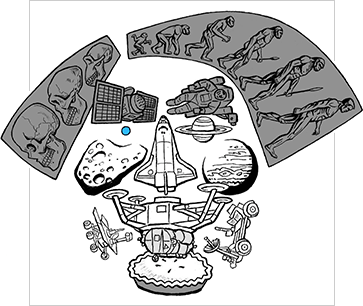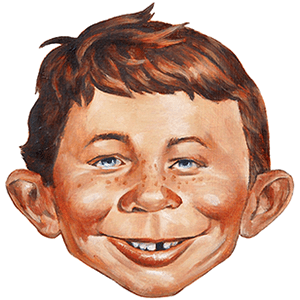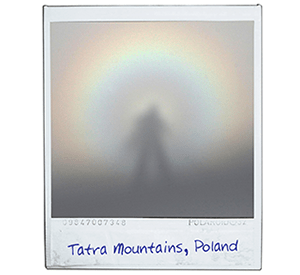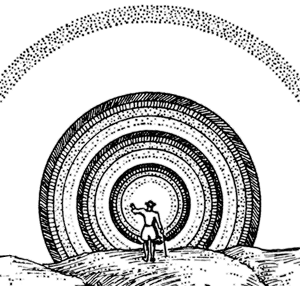‘Happy Xmas (War Is Over)’ is a song written by John Lennon and Yoko Ono and released in 1971 as a single by John & Yoko/Plastic Ono Band with the Harlem Community Choir. Ostensibly a protest song about the Vietnam War, it has become a Christmas standard and has appeared on several Christmas albums. The lyric is based on a campaign in late 1969 by Lennon and Ono, who rented billboards and posters in eleven major cities around the world that read: ‘WAR IS OVER! (If You Want It) Happy Christmas from John and Yoko.’ In 1971, the US was deeply entrenched in the unpopular Vietnam War.
The melody and chord structure are from the folk standard ‘Stewball,’ about a race-horse. Lennon and Ono added modulation through several keys and the ‘War is over’ counter-melody. It was recorded at Record Plant Studios in New York City in late October 1971, with the help of producer Phil Spector. It features heavily echoed vocals and backing vocals from children from the Harlem Community Choir.
Happy Xmas
Religion and Science
The relationship between religion and science has been a focus of the demarcation problem, the question of where to the boundary between science and religion. Religion, is often argued to rely on revelation and faith.
The methods of science are elaborate and science does not depend on faith. Some scholars say the two are separate, as in John William Draper’s conflict thesis and Stephen Jay Gould’s non-overlapping magisteria, while others propose an interconnection.
Theistic Evolution
Theistic evolution is a concept that asserts that classical religious teachings about God are compatible with the modern scientific understanding about biological evolution. In short, theistic evolutionists believe that there is a God, that God is the creator of the material universe and (by consequence) all life within, and that biological evolution is simply a natural process within that creation. Evolution, according to this view, is simply a tool that God employed to develop human life.
Theistic evolution is not a scientific theory, but a particular view about how the science of evolution relates to religious belief and interpretation. Theistic evolution supporters can be seen as one of the groups who reject the conflict thesis regarding the relationship between religion and science – that is, they hold that religious teachings about creation and scientific theories of evolution need not contradict. Proponents of this view are sometimes described as Christian Darwinists.
Infrared Photography
In infrared photography, the film or image sensor used is sensitive to infrared light, which is the domain of thermal imaging. Wavelengths used for photography range from about 700 nm to about 900 nm. Usually an ‘infrared filter’ is used; this lets infrared (IR) light pass through to the camera, but blocks all or most of the visible light spectrum (the filter thus looks black or deep red).
When these filters are used together with infrared-sensitive film or sensors, very interesting ‘in-camera effects’ can be obtained; false-color or black-and-white images with a dreamlike or sometimes lurid appearance known as the ‘Wood Effect,’ an effect mainly caused by foliage (such as tree leaves and grass) strongly reflecting in the same way visible light is reflected from snow. There is a small contribution from chlorophyll fluorescence, but this is marginal and is not the real cause of the brightness seen in infrared photographs. The effect is named after the infrared photography pioneer Robert W. Wood.
Anton Stankowski
Anton Stankowski (1906 – 1998) was a German graphic designer, photographer and painter. Typical Stankowski designs attempt to illustrate processes or behaviors rather than objects. Such experiments resulted in the use of fractal-like structures long before their popularization by Benoît Mandelbrot in 1975. Despite producing many unique examples of concrete art and photographics, Stankowski is best known for designing the simple trademark of the Deutsche Bank.
His work is noted for straddling the camps of fine and applied arts by synthesising information and creative impulse. He was inspired by the abstract paintings of Mondrian, van Doesburg, and Kandinsky. Stankowski advocated graphic design as a field of pictorial creation that requires collaboration with free artists and scientists.
Zoo Hypothesis
The zoo hypothesis is one of a number of suggestions that have been advanced in response to the Fermi paradox, regarding the apparent absence of evidence in support of the existence of advanced extraterrestrial life. According to this hypothesis, aliens would generally avoid making their presence known to humanity, or avoid exerting an influence on human development, somewhat akin to zookeepers observing animals in a zoo, or experimental scientists observing a study that closer examination would ruin.
Adherents of the hypothesis consider that Earth and humans are being secretly surveyed using equipment located on Earth or elsewhere in the Solar System which relays information back to the observers. It is also suggested that overt contact will eventually be made with humanity once humans reach a certain level of development.
Carl Sagan
Carl Sagan (1934 – 1996) was an American astronomer. He devoted his life to popularizing science. He speculated about what life from other planets would be like, and promoted the search for extraterrestrial life. He is world famous for his popular science books and the television series Cosmos, which he co-wrote and presented.
He was born in Brooklyn New York where his father, Sam Sagan, was a Jewish clothes maker and his mother, Rachel Molly Gruber, was a housewife. Sagan attended the University of Chicago earning two degrees in physics. He followed with a doctorate in Astronomy in 1960 and taught at Harvard University until 1968, when he moved to Cornell University.
read more »
The Yellow Kid
The Yellow Kid emerged as the lead character in ‘Hogan’s Alley,’ a comic first drawn by Richard F. Outcault in 1894, which became one of the first Sunday supplement comic strips in an American newspaper. The Yellow Kid was a bald, snaggle-toothed boy who wore a yellow nightshirt and hung around in a ghetto alley filled with equally odd characters, mostly other children.
With a goofy grin, the Kid habitually spoke in a ragged, peculiar ghetto argot printed on his shirt, a device meant to lampoon advertising billboards. His head was drawn wholly shaved as if having been recently ridden of lice, a common sight among children in New York’s tenement ghettos at the time. His nightshirt, a hand-me-down from an older sister, was white or pale blue in the first color strips.
read more »
Alfred E. Neuman
Alfred E. Neuman is the fictional mascot and iconic cover boy of Mad magazine. The face had drifted through American pictography for decades before being claimed and named by Mad editor Harvey Kurtzman. Since his debut in Mad, Neuman’s likeness, distinguished by jug ears, a missing front tooth, and one eye lower than the other has graced the cover of all but a handful of the magazine’s 500 issues. His face is rarely seen in profile; he has virtually always been shown in full frontal view, directly from behind, or in silhouette.
Harvey Kurtzman first spotted the image on a postcard pinned to the office bulletin board of Ballantine Books editor Bernard Shir-Cliff. ‘It was a face that didn’t have a care in the world, except mischief,’ recalled Kurtzman.
read more »
Stay Puft Marshmallow Man
The Stay Puft Marshmallow Man is a fictional mascot from the Ghostbusters franchise of media, which sometimes appears as a giant, lumbering paranormal monster.
It first appears in the 1984 film Ghostbusters as a picture logo on a prop package of marshmallows in Dana Barrett’s apartment when she places the groceries on her kitchen counter, on a graffiti advertisement on the building next to the Ghostbuster’s HQ when the ghosts are released from the containment grid after the power is shut down, then later in the climax of the film.
read more »
Brocken Specter
A Brocken specter is the apparently enormous and magnified shadow of an observer, cast upon the upper surfaces of clouds opposite the sun. The phenomenon can appear on any misty mountainside or cloud bank, or even from an airplane, but the frequent fogs and low-altitude accessibility of the Brocken, a peak in the Harz Mountains in Germany, have created a local legend from which the phenomenon draws its name. The Brocken specter was observed and described by Johann Silberschlag in 1780, and has since been recorded often in literature about the region. The ‘specter’ appears when the sun shines from behind a climber who is looking down from a ridge or peak into mist or fog. The light projects the climber’s shadow forward through the mist, often in an odd triangular shape due to perspective.
The apparent magnification of size of the shadow is an optical illusion that occurs when the observer judges his shadow on relatively nearby clouds to be at the same distance as faraway land objects seen through gaps in the clouds, or when there are no reference points at all by which to judge its size. The shadow also falls on water droplets of varying distances from the eye, confusing depth perception. The ghost can appear to move (sometimes quite suddenly) because of the movement of the cloud layer and variations in density within the cloud. The head of the figure is often surrounded by the glowing halo-like rings of a glory, rings of coloured light that appear directly opposite the sun when sunlight is reflected by a cloud of uniformly-sized water droplets. The effect is caused by the diffraction of visible light.














